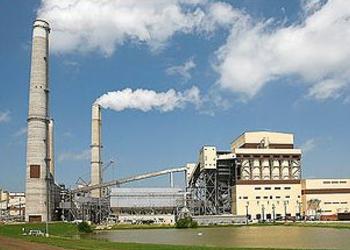
WASHINGTON, DC, October 16, 2013 (ENS) – The U.S. Supreme Court said Tuesday that it will review an appeals court ruling that unanimously upheld the Environmental Protection Agency’s right to regulate greenhouse gases emitted from power plants and factories.
At issue is whether the EPA can use a 2007 Supreme Court decision that allows the agency to regulate greenhouse gases from “mobile sources” under the Clean Air Act to regulate emissions from stationary sources.
That 2007 ruling in Massachusetts v. EPA led two years later to an official finding by the agency that greenhouse gas emissions endanger the public health and welfare by leading to long lasting changes in the climate that can have a range of negative effects on human health and the environment.

The Obama Administration has used that finding to extend its authority beyond motor vehicles to develop national standards for stationary sources of six greenhouse gases that trap the Sun’s heat close to the planet, raising the planetary temperature.
The legal action to block the EPA from regulating greenhouse gases emitted by power plants and factories was brought by the Utility Air Regulatory Group, a power company trade association, and the Republican attorneys general of 13 states.
In Utility Air Regulatory Group v. EPA, the Supreme Court has consolidated a number of petitions. Texas and 11 other states are fighting the agency’s plan as a group, while Alaska joined in a case with the U.S. Chamber of Commerce.
Texas Attorney General Greg Abbott said Tuesday, “The EPA violated the U.S. Constitution and the federal Clean Air Act when it concocted greenhouse gas regulations out of whole cloth. The EPA’s illegal regulations threaten Texas jobs and Texas employers. As Texas has proven in other lawsuits against the EPA, this is a runaway federal agency, so we are pleased the Obama Administration will have to defend its lawless regulations before the U.S. Supreme Court.”
EPA Administrator Gina McCarthy said the court will take up “a very narrow legal question” and told the Associated Press Tuesday “that EPA has the authority to protect public health by reducing carbon pollution under the Clean Air Act.”
On September 20, before the government shutdown, the EPA today proposed Clean Air Act standards to cut carbon pollution from new power plants in order to combat climate change and improve public health.
The agency began a program of outreach and direct engagement with state, tribal, and local governments, industry and labor leaders, non-profits, and others to establish carbon pollution standards for existing power plants and build on state efforts to move toward a cleaner power sector.
The proposal achieves the first milestone outlined in President Barack Obama’s June 25 Memorandum to EPA on “Power Sector Carbon Pollution Standards,” a major part of the President’s Climate Action Plan.
“Climate change is one of the most significant public health challenges of our time. By taking commonsense action to limit carbon pollution from new power plants, we can slow the effects of climate change and fulfill our obligation to ensure a safe and healthy environment for our children,” McCarthy said September 20. “These standards will also spark the innovation we need to build the next generation of power plants, helping grow a more sustainable clean energy economy.”
Under the EPA’s proposal, new large natural gas-fired turbines would need to meet a limit of 1,000 pounds of CO2 per megawatt-hour, while new small natural gas-fired turbines would need to meet a limit of 1,100 pounds of CO2 per megawatt-hour.
New coal-fired units would need to meet a limit of 1,100 pounds of CO2 per megawatt-hour, and would have the option to meet a somewhat tighter limit if they choose to average emissions over multiple years, giving those units additional operational flexibility.
These proposed standards will ensure that new power plants are built with available clean technology to limit carbon pollution, a requirement that is in line with investments in clean energy technologies that are already being made in the power industry.
McCarthy said the proposed standards ensure that the power plants of the future use cleaner energy technologies, such as efficient natural gas, advanced coal technology, nuclear power, and renewable sources of energy like wind and solar.
Power plants are the largest concentrated source of emissions in the United States, together accounting for roughly one-third of all domestic greenhouse gas emissions.
Currently, nearly a dozen states have already implemented or are implementing their own market-based programs to reduce carbon pollution.
In addition, more than 25 states have set energy efficiency targets, and more than 35 have set renewable energy targets.
While the United States has limits in place for arsenic, mercury and lead pollution that power plants can emit, currently, there are no national limits on the amount of carbon pollution new power plants can emit.
Copyright Environment News Service (ENS) 2013. All rights reserved.
© 2013, Environment News Service. All rights reserved. Content may be quoted only with proper attribution and a direct link to the original article. Full reproduction is prohibited.
